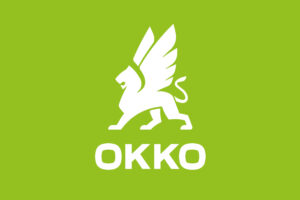
The OKKO filling station network currently occupies about 19% of the Ukrainian retail fuel market, said Vasyl Danylyak, CEO of the company.
“This is when we count the entire market, both black and gray, when everything is together, we operate with such figures,” he said in an interview with the Careerist YouTube channel.
According to Danyliak, OKKO currently ranks first in terms of market share in Ukraine, its gap with the second place, represented by WOG, is about 5 percentage points.
The CEO of OKKO also said that the group’s turnover in 2023 amounted to $2.4 billion, and EBITDA – $240 million.
“These are petroleum product retail, non-fuel business, wholesale, agro-trading, agro-financing, trade in mineral fertilizers, natural gas and electricity,” he said.
As reported, by the end of 2022, Danyliak estimated OKKO’s fuel sales market share at 25%, up 7 percentage points from 2021,
OKKO filling stations network is a part of OKKO Group. It is one of the largest filling station chains in Ukraine, with about 400 filling stations.
OKKO Group unites more than 10 diversified businesses in production, trade, construction, insurance, maintenance and other services. OKKO-Agrotrade division and Khlibprom concern operate in agriculture. The flagship company of the group is Galnaftogaz, which operates one of the largest filling stations in Ukraine under the OKKO brand.
The company’s majority shareholder is Vitaly Antonov. Minority shareholders include the European Bank for Reconstruction and Development (EBRD).

In January-August 2024, PJSC Ukrnafta doubled its revenue from sales of related goods and services at its filling station network compared to the same period last year, the company reported on its Facebook page.
According to the company, the number of non-fuel receipts increased by 71% during this period.
In total, UKRNAFTA gas stations sold 9.1 million units of goods in eight months, compared to 5.3 million in January-August 2023.
The conversion ratio – the ratio between fuel and non-fuel sales – was 0.29 during this period. In 2023, it was 0.21, and in 2022, 0.12. The company’s goal is to reach one.
“The company continues to re-equip its filling stations, opening markets where kiosks used to be, which significantly improves customer service,” the statement said.
“Ukrnafta is the largest oil company in Ukraine and the operator of the national network of filling stations. In March 2024, the company took over the management of Glusco’s assets and operates a total of 545 filling stations – 460 owned and 85 managed.
As reported, in January-June 2024, Ukrnafta earned UAH 10.6 billion in net profit.
The company is implementing a comprehensive program to restore operations and update the format of its filling stations. Since February 2023, Ukrnafta has been issuing its own fuel coupons and NAFTA cards, which are sold to legal entities and individuals through Ukrnafta-Postach LLC.
Ukrnafta’s largest shareholder is Naftogaz of Ukraine with a 50%+1 share. In November 2022, the Supreme Commander-in-Chief of the Armed Forces of Ukraine decided to transfer to the state a share of corporate rights of the company, which belonged to private owners and is currently managed by the Ministry of Defense.

President of the European Commission Ursula von der Leyen has announced her visit to Kyiv to discuss with President of Ukraine Volodymyr Zelenskyy the European Union’s support for Ukraine’s energy security ahead of winter.
The statement was made by European Commission President Ursula von der Leyen on Thursday in Brussels at a joint press conference with International Energy Agency Executive Director Fatih Birol.
“The heating season will start in two weeks. As the temperature drops, the European Union is ready to step up its support for Ukraine. We are preparing for the winter together.
After this press conference, I will go to Kyiv to discuss these issues with President Zelensky tomorrow,” she said.

Ukrainian enterprises in January-August of this year exported zinc for $201 thousand (in August – $79 thousand), while in January-August 2023 the indicators amounted to $88 thousand.
Ukraine in 2023 increased imports of zinc and zinc products – by 18.8%, up to $45.966 mln. Zinc was supplied abroad in 2023 for $130 thousand against $1.331 mln in 2022.
Pure metallic zinc is used to restore noble metals, used to protect steel from corrosion and for other purposes.

For the next two weeks, the traffic of cars and trucks leaving Ukraine will be partially restricted at the Chop-Záhony checkpoint on the Ukrainian-Hungarian border.
Due to the repair of the road surface in the customs control zone of the checkpoint, vehicles will be able to use only two lanes out of five available. Accordingly, this will affect their clearance and passage across the border. The repair work is being carried out as part of the Customs and Border Infrastructure Modernization Project with the support of the United States Agency for International Development (USAID).